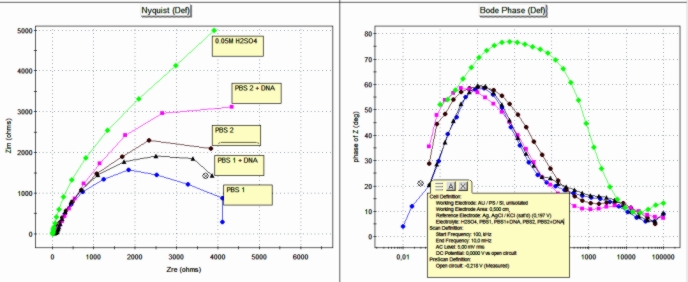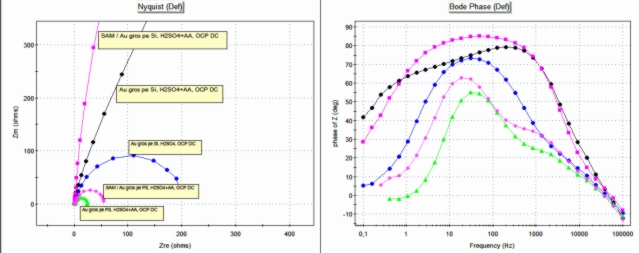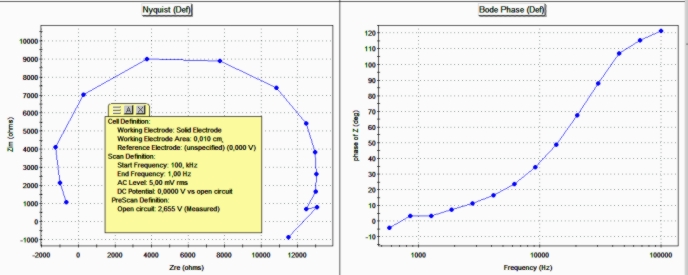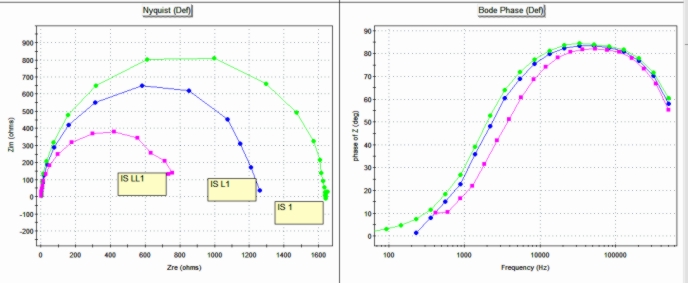|
Electrochemical Impedance Spectrometer
PARSTAT 2273 – Princeton Applied Research
Technical characteristics:
The PARSTAT 2273 is the ultimate potentiostat / galvanostat / FRA, boasting superior quality and high reliability - its exceptional impedance capability, resolution, speed, high current, and high compliance voltage continues to be the standard against which all other systems are measured.
General Specifications: The PARSTAT 2273 consists of (i) hardware capable of ± 10 V scan ranges, 2 A current capability (1.2 fA current resolution), 100 V compliance, >1013 Ω input impedance, <5 pF of capacitance and 10μHz to 1 MHz built in analyzer for impedance measurements; (ii) Electrochemistry PowerSuite software required for data analysis and ZSimpWin - EIS modeling software package.
|
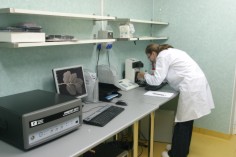
|
Description:
Impedance spectroscopy (IS) is an experimental technique that compares the electrical response of a test system to a time varying electrical excitation to delineate interfacial and bulk material parameters and it could be applied for:
→ materials and fabrication processes characterization
- crystalline structure (fast evaluation of individual contribution to electrical conduction or to polarisation from different sources – bulk, grain boundary or intergranular contact regions effects and electrical homogeneity for optimization of manufacturing parameters for fuel cells or sensors components);
- electrode characterization – flat band potential / zero charge potential, charge density; metallic nanoparticle catalytic properties and increased electroactive surface - conductive sensing interface for electroanalysis;
- contribution of surface electronic state to electron transport – electric transfer in nanocomposite materials;
- dynamic characterization to extract solar cells parameters: doping concentration of junction, barrier height voltage, effective lifetime and effect of buffer layers on minoritary lifetime;
- characterisation of packing density and distribution of pinhole defects in self-assembled monolayers – electron transfer through self-assembled alkanethiol and related molecular recognition layers;
→ electrochemical systems and physico-chemical phenomena characterization of the corresponding interfaces
- mass transport, charge transfer across the interface and adsorption effects;
- reaction parameters (connection of electrode kinetics and electrode geometry, monitoring of surface electrode poisoning due to adsorbed intermediates for sensors applications);
- effects of interfacial layers as nanostructurated, porous structures for sensing application;
- non-Faradaic mechanisms (water management, ohmic losses or ionic conductivity in proton exchange membrane at different humidity levels for fuel cell applications);
- oxide / coating integrity (fractional coverage of partially blocked electrode);
- corrosion rates (barrier properties of organic coating in contact with corrosive solution and inhibitor function);
→ bio-electrochemical systems characterization
- label-free detection tool for analyzing of interfacial properties changing by binding of charged biomolecules on surface and for biomolecular interactions studies for biosensor applications;
- DNA hybridisation on electrodes analysis for development of DNA chips since it is a non-invasive technique (the applied AC excitation is small enough to prevent the unwanted effects on biomaterials and does not requires a potential ramp to determine the irreversible oxidation of biomolecules linked to the surface) – applications in detecting of protein binding to a nucleic acid layer;
- effective method to detect formation of antigen-antibody, biotin-avidin complex or cellular growing on the electrode surface for development of electrochemical immunosensor devices for food, pharmaceutical chemistry and clinical diagnostics industry.
|
Applications:
- microelectronics – development of new processes and materials with improved electrical properties;
- energy – development of new fuel cell devices as clean energy sources
- sensors area - development of electrochemical immunosensor devices for food, pharmaceutical chemistry and clinical diagnostics industry;
- solar cells area – development of new structures with improved parameters;
- biomedical applications - implant biocompatibility studies;
- fundamental studies of physico-chemical phenomena at bio-hybrid interfaces;
********************** |
| Results: |
|
Partneship:
The analysis will be useful for the following projects:
- “Study of transport phenomena at metal-semiconductor and metal/organic interfaces for development of electronic systems” - Nucleu Programme (2009-2011);
- “Complementary techniques for investigation of microarray type structures” - Nucleu Programme (2009-2011);
- “Study of membrane - electro-catalyst nanocomposite assemblies on silicon for fuel cell application” – PNII – IDEI Programme (2007-2010);
- “Study of silicon-protein type biohybride nanostructured surfaces with applications in bio(nano)senzing” – PNII – IDEI Programme (2007-2010);
- “Miniaturised power source for portable electronics realised by 3D assembling of complex hybrid micro- and nanosystems (MiNaSEP)” – PNII – Parteneriat Programme (2007-2010);
|
| |
| Application scientist: Dr. (phys.) Mihaela Miu, mihaela.miu@imt.ro |
|
HOME |
 |
Last update: March 5, 2012 |
|



